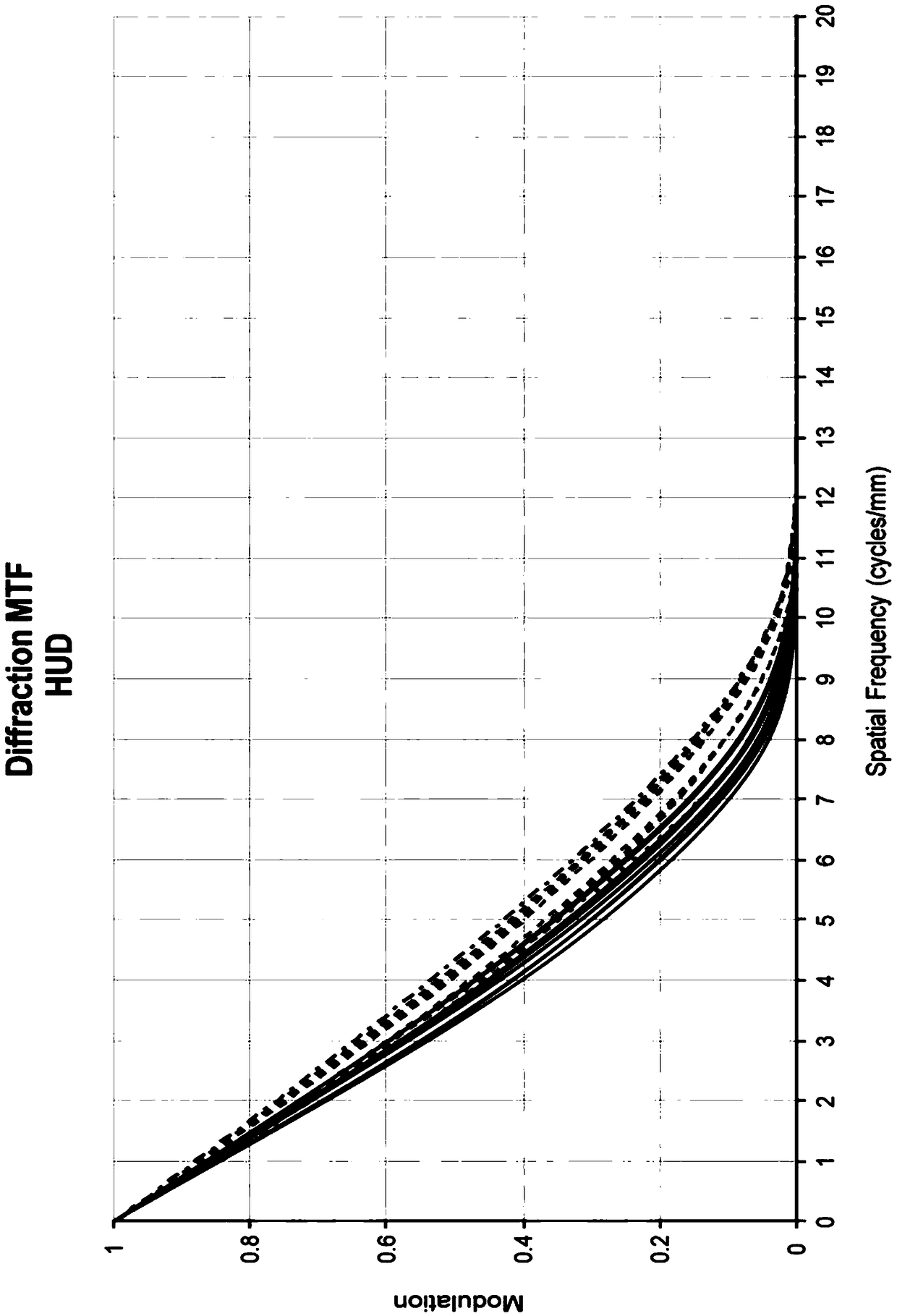Lateral off-axis three-reflex optical system for vehicle-mounted head-up display device
An optical system and off-axis three-mirror technology, applied in optics, optical components, instruments, etc., can solve problems such as difficulty in ensuring a wide range of eye box diameters, increased processing and material costs, and large space occupied by devices, achieving Good MTF curve, strong cost advantage, and the effect of saving processing costs
- Summary
- Abstract
- Description
- Claims
- Application Information
AI Technical Summary
Problems solved by technology
Method used
Image
Examples
Embodiment Construction
[0035] The technical features of the present invention will be described in further detail below in conjunction with the accompanying drawings so that those skilled in the art can understand.
[0036] A lateral off-axis three-mirror optical system for a vehicle-mounted head-up display device, including a luminescent screen L6, a secondary reflector L5 is provided obliquely in front of the luminescent screen L6, and a main reflector L5 is provided obliquely in front of the secondary reflector L5. The reflector L4 and the windshield L3 are arranged above the main reflector L4.
[0037] exist figure 1 As shown, on the luminous screen L6 is the on-board information required by the driver. The light diverged from the luminous screen L6 reaches the secondary reflector L5, is reflected by the secondary reflector L5 and converges on the primary reflector L4, and the light is reflected by the primary reflector L5 Displayed on the windshield L3, and then received by the entrance pupil ...
PUM
 Login to View More
Login to View More Abstract
Description
Claims
Application Information
 Login to View More
Login to View More - R&D
- Intellectual Property
- Life Sciences
- Materials
- Tech Scout
- Unparalleled Data Quality
- Higher Quality Content
- 60% Fewer Hallucinations
Browse by: Latest US Patents, China's latest patents, Technical Efficacy Thesaurus, Application Domain, Technology Topic, Popular Technical Reports.
© 2025 PatSnap. All rights reserved.Legal|Privacy policy|Modern Slavery Act Transparency Statement|Sitemap|About US| Contact US: help@patsnap.com



